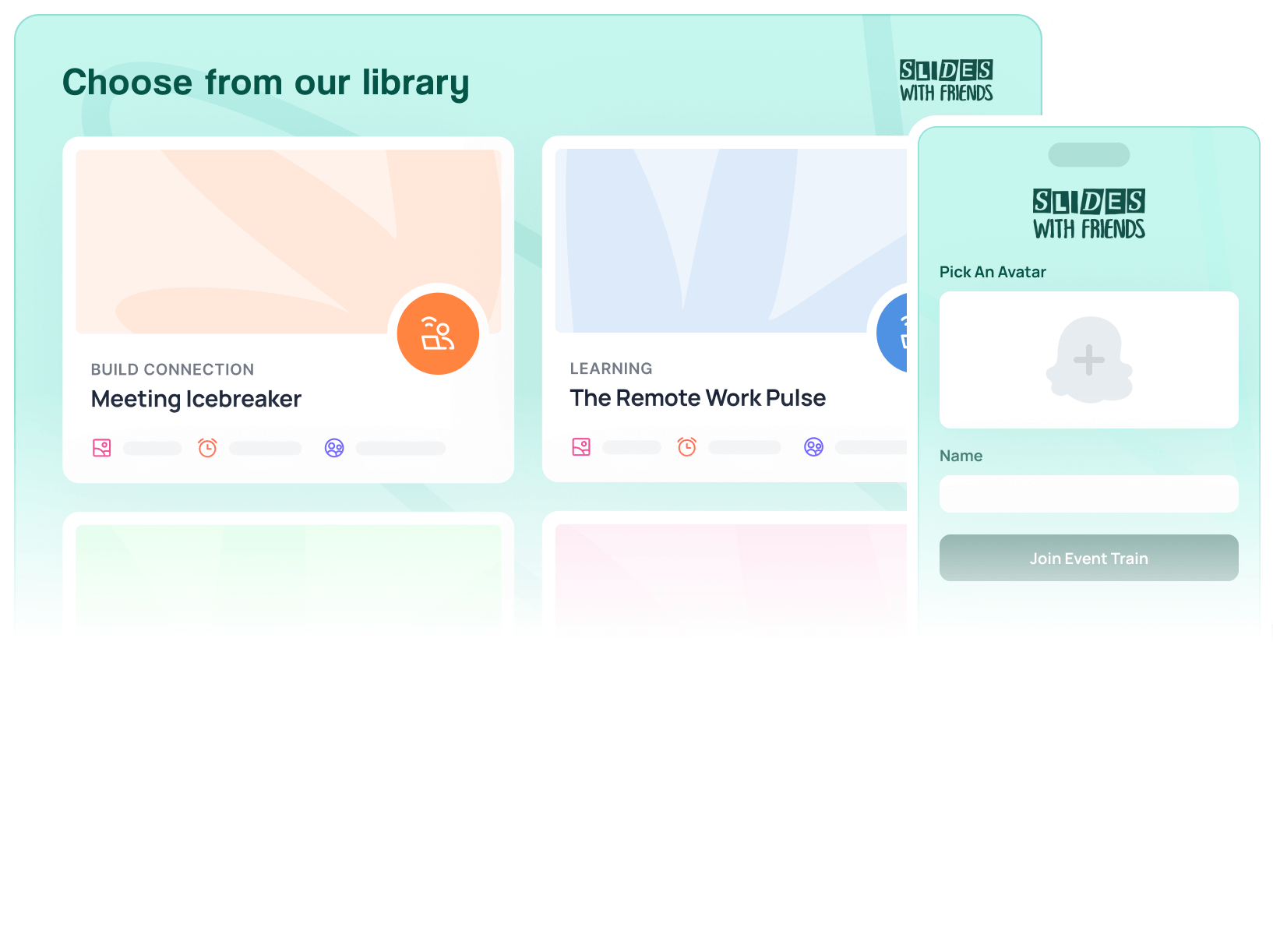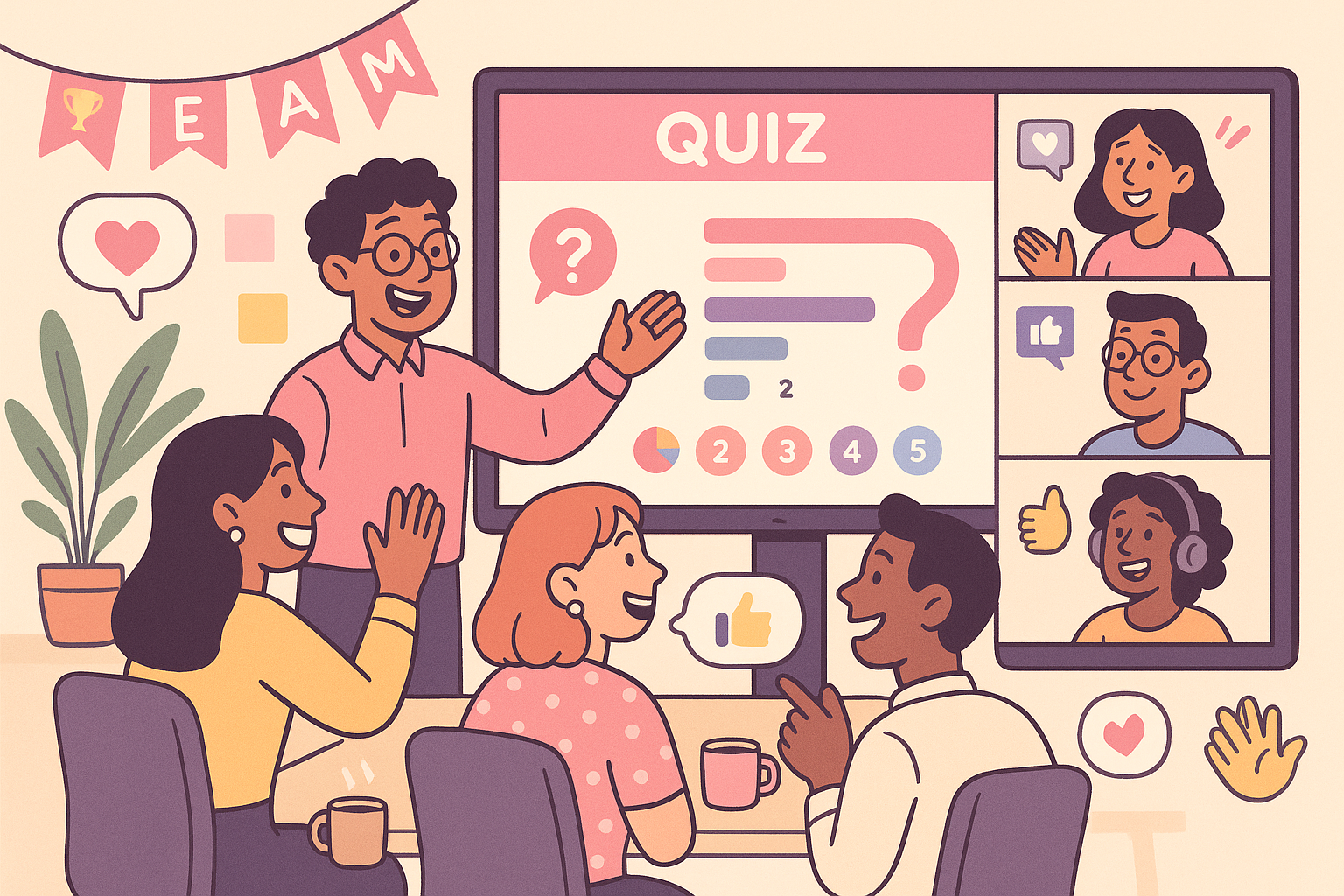How to Make a Webinar Interactive and Engaging
Sick of seeing bored faces while you present? Make your next webinar interactive and engaging with these tips and tools.

Whether you're updating your team, launching a new product or service, running training, or lecturing, there will come a time when you'll need to host a webinar. And webinars are great! They are excellent ways to share information and engage with your audience. But, let's be honest, they can also be very dry and boring.
Whenever there's the opportunity for someone to monologue, there's going to be a chance of glazed-over eyes and a lack of interaction. After all, our attention span has drastically decreased to 8.25 seconds or 8 to 10 minutes for captive audiences (depending on who you ask). And you don't want that nor do we want that for you.
So let's look at some tips and go over a few tools you can use to keep your webinar more interactive and engaging.
Be Prepared

Before we get to the fun stuff, the best way to bring value to your webinar is to be prepared. No matter what type of interactive content you choose to use, make sure you are prepared before getting started. Know exactly why you're doing the webinar and what message you want to send out. Keep track of questions in advance and be ready to answer them as they come in. Have slides prepared to support your content and practice presenting them a few times before the webinar starts so you can feel confident when it's time to go live.
By taking the extra steps to be prepared, you will set yourself up for success by creating an engaging and interactive webinar that will leave a lasting impression on participants.
Make It Relevant from the Start
We're a self-centered people. But don't worry, that can work to your advantage! To ensure your webinar is engaging, start with a relevant introductory message that catches the attention of your audience. Keep the introduction short and to the point, so you can immediately captivate the viewers and pique their interest. Let them know off the bat why what you're talking about will help them.
A great opening will draw in participants and set the tone for the relevant content you plan to deliver throughout the session. An effective introduction helps establish a connection between yourself and the participants and it also helps spark excitement about what is to come during the webinar.
Use a Variety of Interactive Tools
When we say 'interactive tools', we mean audio, video, and, of course, slides. These tools will help keep your audience engaged. Using a variety of audio, video, and slide content can increase the variety and interest level of your webinar, as well as allowing you to interact more with attendees. Audio is great for providing useful tips, discussing industry trends, and having Q&A sessions. Video helps walk through a process or demonstration. Slides offer the opportunity to showcase statistics and other data that can support the topics being discussed. When using Slides with Friends, you also get the use of live word clouds, interactive polls, trivia, and games.

The possibilities are endless when it comes to making use of each type of content which in turn creates a more interesting and engaging experience for attendees.
Find Creative Ways to Ask Questions
Asking questions breaks up how much a presenter is talking while simultaneously giving participants the opportunity to engage with each other. One of our favorite ways to do this is by using the Word Cloud deck, which gives attendees the chance to ask short questions and then vote on the ones they would like answered. It's a quick, visual way to find out what the group wants to know.

Of course, you can also use some of the more typical methods for asking questions, like polls, user votes, or rating slides. All can be done in real-time so you can get instant feedback.
At the end of your webinar, make sure you leave some time for a Q&A session where attendees can ask their questions and receive answers right away. This will help ensure everyone attending the webinar leaves feeling informed and satisfied with what they learned during the session.
Give an End of Webinar Incentive
We all like free things. There's no point in denying it! This is why offering something as an incentive at the end of your presentation is a great way to establish relationships with current attendees and encourage future attendance.
Depending on your audience and budget, your gift could vary from discounts or promotional codes for products related to your industry, access to exclusive content, e-books, or research papers related to topics discussed in the webinar, free consultation sessions, or certificates of participation.
However, make sure you put real thought into your incentive and make it something worth having. While an incentive can get participants coming back, a bad one can leave a very bad impression.
Ultimately, by providing an incentive during the conclusion of your webinar, you foster engagement with attendees and create confident brand ambassadors for your event in the future.
Follow Up with Participants

Following up with attendees who attended a webinar is an important step in keeping relationships alive. A check-in allows organizers to not only thank them for attending but also to check how they felt about the experience afterward. This can help you gauge participant satisfaction and make improvements for the next webinar if needed.
Be genuine in your follow-ups and be ready to listen. Taking this extra step can be beneficial in building strong relationships with those who took part in your webinar.
The Power of Webinars
Webinars are an effective way to connect with potential customers and deliver value to them while also learning more about their needs and interests. By bringing interactivity into your webinars, you can create more engaging experiences for participants which will allow them to learn faster and retain more information from your presentation.


Ready to ditch the dull, and run team sessions that people will actually enjoy?
Get started with a Slides with Friends deck in no time. We’ve got all the interactive features you need in one easy-to-learn, easy-to-set-up tool.















